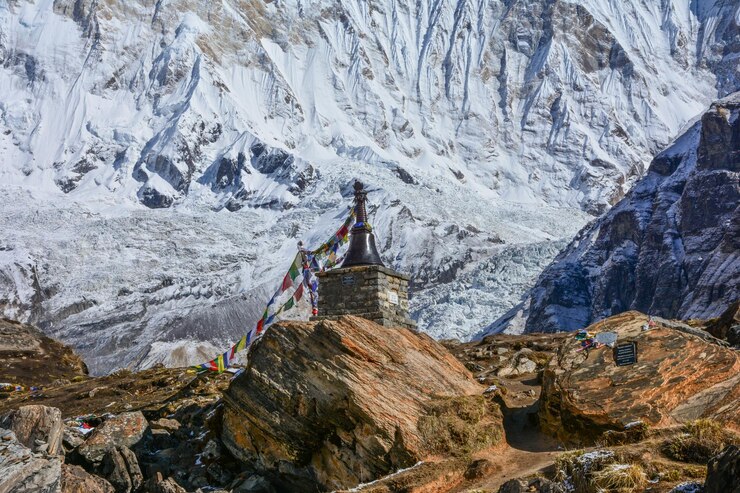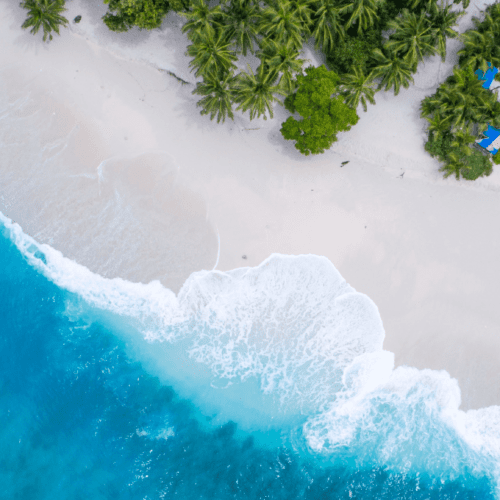Best treks in Nepal
Table of Contents
Nepal is undoubtedly one of the best destinations for trekking in the world. With its awe-inspiring Himalayas, rich cultural heritage, and thrilling adventure, Nepal offers an unforgettable trekking experience for people of all skill levels. Whether you’re seeking the challenge of the Annapurna Circuit trek, the iconic Everest Base Camp trek, or the scenic beauty of the Langtang Valley trek, Nepal has something for every adventurer. The best treks in Nepal offer not only jaw-dropping views of towering mountains like Everest and Annapurna, but also the opportunity to immerse yourself in the unique culture of the Sherpas, Tamangs, and other indigenous people.
In this article, we’ll explore the best treks in Nepal, provide essential information on trekking permits in Nepal, and offer tips to make your trekking journey unforgettable. From lush valleys and sacred lakes to high-altitude passes, the trekking trails in Nepal offer some of the most spectacular landscapes in the world.
The Best Treks in Nepal

Nepal is home to some of the most famous trekking routes on the planet. Each trek offers a unique adventure, scenic beauty, and cultural insights. Here’s a deeper look into some of the best treks in Nepal that trekkers from around the world flock to:
1. Annapurna Circuit Trek
- Highlights: The Annapurna Circuit trek is one of the most renowned and diverse trekking routes in Nepal. This trek offers a stunning mix of landscapes, from lush subtropical forests to barren, high-altitude deserts. The trek takes you around the Annapurna massif, with breathtaking views of mountains like Machapuchare, Annapurna I, and Dhaulagiri. One of the major highlights is crossing Thorong La Pass, a challenging 5,416-meter (17,769-foot) pass.
- Difficulty: The Annapurna Circuit trek is considered very strenuous and requires good physical fitness and proper acclimatization.
- Best Time to Trek: The best time for the Annapurna Circuit trek is from October to December and March to May when the weather is stable and skies are clear.
- Pro Tip: If you want to avoid the road sections, make sure to stick to the NATT (Nepal Annapurna Trails). These trails are a scenic alternative to the road and give you a peaceful trekking experience away from the hustle and bustle of the highways.
2. Everest Base Camp Trek

- Highlights: The Everest Base Camp trek is, without a doubt, one of the most iconic and sought-after treks in the world. This trek takes you into the heart of the Everest region, where you will encounter breathtaking views of Everest, Lhotse, and many other towering peaks. Along the way, you will experience the Sherpa culture, visit the famous Tengboche Monastery, and walk through picturesque villages like Namche Bazaar.
- Difficulty: The Everest Base Camp trek is strenuous, especially because of the high altitude. Acclimatization is essential to avoid altitude sickness.
- Best Time to Trek: The best times to go on the Everest Base Camp trek are during the autumn months (September–November) and spring (March–May). These seasons offer the clearest skies and most pleasant weather for trekking.
- Pro Tip: Acclimatization is key to enjoying your trek and avoiding altitude sickness. Take your time and ascend gradually to help your body adjust to the high altitude.
3. Langtang Valley Trek

- Highlights: The Langtang Valley trek is an ideal choice for trekkers who want to experience the beauty of the Himalayas but don’t have the time for a long trek like the Annapurna Circuit trek or the Everest Base Camp trek. Located just north of Kathmandu, Langtang offers stunning mountain views, including Langtang Lirung and Ganesh Himal, as well as a chance to visit traditional Tamang villages and monasteries.
- Difficulty: Moderate, making it a great option for beginner to intermediate trekkers.
- Best Time to Trek: The best times to trek in the Langtang Valley are from March to May and September to November.
- Pro Tip: This trek offers a great alternative to the more crowded Everest Base Camp trek and Annapurna Circuit trek, and it’s perfect for those with limited time.
4. Gosaikunda Trek

- Highlights: The Gosaikunda trek takes you to the sacred alpine lake of Gosaikunda, which is a pilgrimage site for both Hindus and Buddhists. The trek offers a blend of beautiful mountain scenery, rugged trails, and a chance to see wildlife like Himalayan tahr and musk deer. The high-altitude lake is surrounded by snow-capped peaks, making it a peaceful and spiritual destination.
- Difficulty: Moderate to strenuous, as the trek involves high altitudes.
- Best Time to Trek: Spring (March to May) and Autumn (September to November) are the best times to visit.
- Pro Tip: For an extended adventure, combine this trek with the Langtang Valley trek to explore even more scenic beauty and cultural richness.
5. Upper Mustang Trek
- Highlights: The Upper Mustang trek offers a completely different experience compared to the other best treks in Nepal. The region is home to desert-like landscapes, unique Tibetan Buddhist culture, and ancient monasteries. Also known as the “Last Forbidden Kingdom,” Upper Mustang remains one of the most culturally preserved areas in Nepal, and it is restricted to ensure its preservation.
- Difficulty: Moderate, but trekkers should be prepared for high-altitude conditions and the remote nature of the trek.
- Best Time to Trek: The best time to trek in Upper Mustang is from May to October.
- Pro Tip: Since Upper Mustang is a restricted area, it requires special permits, which need to be arranged through a trekking agency well in advance.
Planning Your Trek
To fully enjoy the best treks in Nepal, it’s essential to plan ahead. Below are some important considerations to help you prepare for your journey.
Trekking Permits in Nepal
Trekking in Nepal requires specific permits, depending on the region you plan to explore. Here are the primary permits you’ll need for your trek:
- TIMS (Trekkers’ Information Management System): This permit is required for most treks in Nepal. It helps track trekkers and ensures safety.
- Conservation Area Permits: If you’re trekking in the Annapurna Circuit trek, you’ll need an ACAP (Annapurna Conservation Area Permit) or an MCAP (Manaslu Conservation Area Permit).
- Restricted Area Permits: For regions like the Upper Mustang trek, special permits are required. These restricted area permits help preserve the area’s unique cultural and environmental significance.
Packing Essentials
Packing the right gear is crucial for a successful trek in Nepal. Here are some essentials:
- Trekking Gear: Comfortable hiking boots, a trekking pole, and a good-quality backpack are must-haves.
- Clothing: Pack light, moisture-wicking clothes for trekking and layers for warmth. Don’t forget rain gear and a warm jacket.
- Sleeping Gear: Depending on your trek, a good-quality sleeping bag is recommended, especially for high-altitude treks like the Everest Base Camp trek and Annapurna Circuit trek.
Tips for a Safe and Enjoyable Trek
- Acclimatization: To avoid altitude sickness, take regular rest days and ascend slowly, especially on high-altitude treks like the Everest Base Camp trek and Annapurna Circuit trek.
- Hydration: Drink plenty of water and carry purification tablets to ensure you stay hydrated during your trek.
- Pacing: Keep a steady pace and listen to your body to avoid exhaustion or injury.
Why Choose Nepal for Trekking?
Nepal is one of the best trekking destinations in the world, offering a unique combination of adventure, natural beauty, and cultural immersion. The best treks in Nepal provide trekkers with the opportunity to witness towering peaks, deep valleys, and sacred lakes, all while exploring remote villages and experiencing ancient cultures. Nepal’s focus on eco-tourism and sustainable trekking practices also ensures that your adventure is as environmentally friendly as it is memorable.
Plan Your Trek with QXP India
Ready to embark on the best treks in Nepal? Let QXP India help you plan your dream adventure. Our expert guides and curated itineraries ensure a seamless trekking experience, from arranging permits to recommending the best trekking routes.
Explore Nepal with QXP India today and discover why trekking in the Himalayas is on every adventure lover’s bucket list. With custom itineraries, expert advice, and an authentic travel experience, we make sure your trek is an unforgettable journey.
Conclusion
Nepal’s best treks in Nepal offer the ultimate adventure for trekkers of all kinds. Whether you’re tackling the challenging Annapurna Circuit trek, exploring the Everest Base Camp trek, or enjoying the scenic beauty of the Langtang Valley trek, Nepal’s treks are sure to leave you with lasting memories. So, start planning your trek today and experience the magic of the Himalayas with QXP India—the ultimate destination for trekking in Nepal.
Frequently Asked Questions
Some of the best treks in Nepal include the Annapurna Circuit trek, Everest Base Camp trek, Langtang Valley trek, Gosaikunda trek, and the Upper Mustang trek. These treks offer varying levels of difficulty, stunning landscapes, and cultural experiences.
to visit Kathmandu is during the spring (March-May) and autumn (September-November) seasons when the weather is pleasant and clear.
Yes, trekking in Nepal typically requires permits, such as the TIMS card, conservation area permits (like ACAP), and special permits for restricted areas like the Upper Mustang trek.
The best time for trekking in Nepal is during the autumn months (September–November) and spring (March–May), when the weather is clear, and temperatures are moderate.
The Everest Base Camp trek is strenuous due to the high altitude. Proper acclimatization is crucial to avoid altitude sickness and make the trek more manageable.
Yes, combining the Langtang Valley trek with the Gosaikunda trek is a popular option for those looking for an extended adventure with scenic mountain views and cultural immersion.
Yes, the Upper Mustang trek is in a restricted area, and you’ll need special permits to enter. These permits are usually arranged through a trekking agency.
Essential trekking gear includes durable hiking boots, a good-quality backpack, layers of clothing for warmth, rain gear, trekking poles, and a high-altitude sleeping bag for longer treks.
Trekking in Nepal is generally safe, but it’s important to acclimatize properly, follow safety guidelines, and trek with a reputable guide to ensure your safety, especially on high-altitude routes like the Everest Base Camp trek.
cityandtalent
Related Articles
Where is Nepal Located | Best Time to Visit Nepal | What Language is Spoken in Nepal | Places to Visit in Nepal | What are People from Nepal Called | Kathmandu Beautiful Nepal | Best Treks in Nepal | Nepal Weather by Month | What is Nepal Famous For | Is Nepal Safe for Tourists | What is the Religion of Nepal | Trekking in Nepal for Beginners | Travel to Nepal from USA | Monsoon Season in Nepal | Nepal Adventure Travel Options | Nepal Sightseeing Highlights | Nepal Travel Guide for Beginners | Religion and Culture in Nepal | Scenic Spots in Nepal for Photographers | Top Attractions in Kathmandu and Nepal









